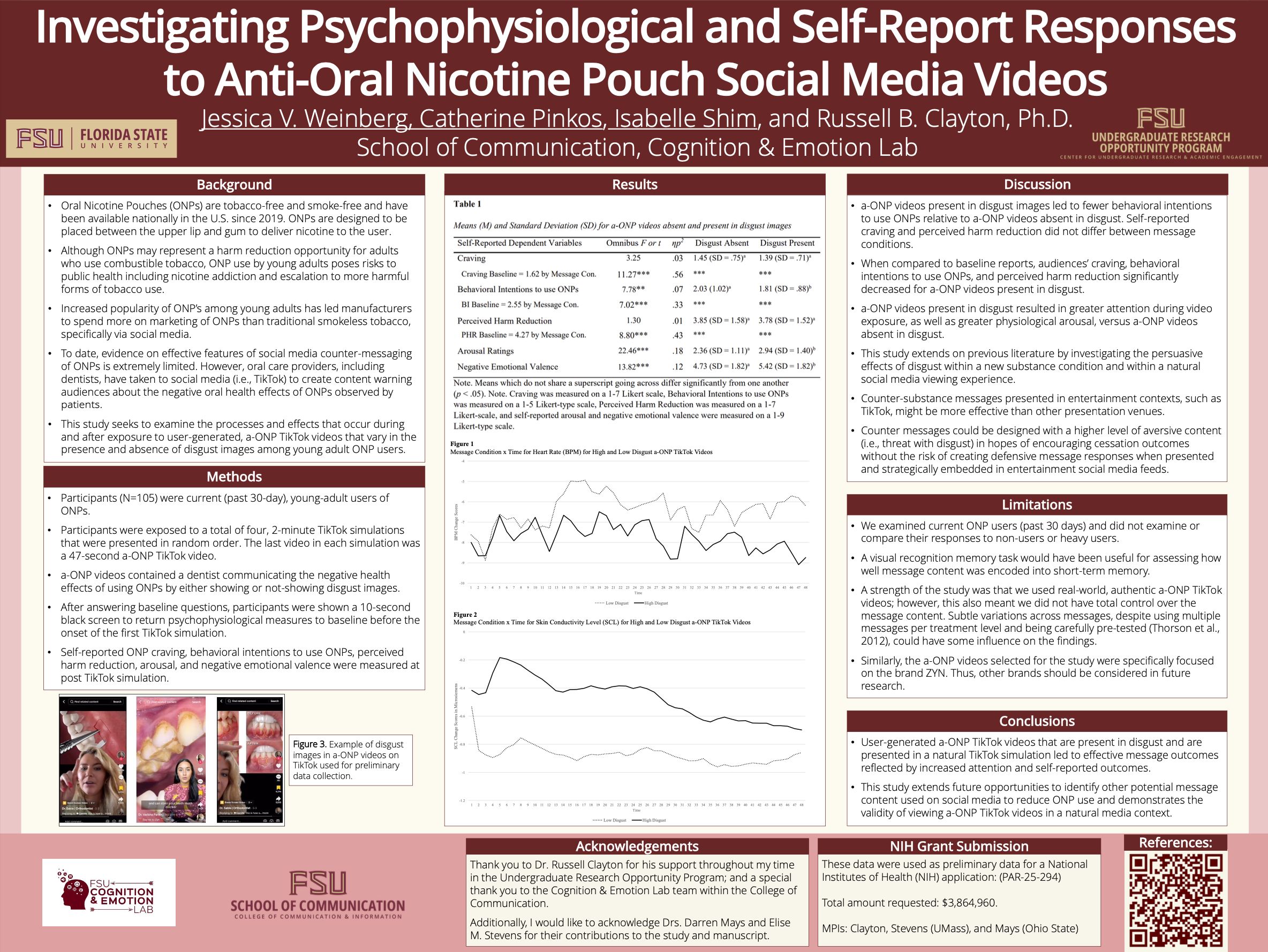Research Symposium
25th annual Undergraduate Research Symposium, April 1, 2025
Catherine Pinkos Poster Session 3: 1:45 pm - 2:45 pm / Poster #142

BIO
My name is Catherine Pinkos and I am a third-year media/communication studies and sport management student from Tampa, FL! Since the 2024 Fall semester, I have greatly enjoyed volunteering as a research assistant in the FSU Cognition and Emotion Lab, learning more about the importance and influence of health communication in our everyday lives. My research interests include influencer marketing with a specific focus on how endorsements by influencers shape our perceptions of various products.
Investigating Psychophysiological and Self-Report Responses of Anti-Oral Nicotine Pouch Social Media Videos
Authors: Catherine Pinkos, Dr. Russell ClaytonStudent Major: Media/Communication Studies and Sport Management
Mentor: Dr. Russell Clayton
Mentor's Department: Cognition and Emotion Lab Mentor's College: College of Communication Co-Presenters: Jessica Weinberg, Isabelle Shim
Abstract
Objective: This study examines young adult oral nicotine pouch (ONP) users’ cognitive and emotional responses to user-generated anti-oral nicotine pouch (a-ONP) TikTok videos varying in the presence and absence of disgust images.
Methods: One hundred and two young adult ONP users were exposed to a TikTok simulation that contained user-generated a-ONP TikTok videos. Participants’ psychophysiological responses were recorded while participants viewed the TikTok simulations. Self-reported craving, behavioral intentions to use ONPs, perceived harm reduction, arousal, and negative emotional valence were measured at baseline and post TikTok simulation exposure.
Results: In support of the negativity bias hypothesis, the psychophysiological data indicated that the presence of disgust images led to increased negative emotion valence, arousal, and greater second-by-second attention to the a-ONP TikTok videos versus those absent in disgust images. Self-reported outcomes revealed a decrease in behavioral intentions to use ONPs for a-ONP TikTok videos present in disgust versus those absent in disgust. Craving, behavioral intentions to use ONPs, and perceived harm reduction of ONPs decreased after exposure to a-ONP TikTok videos present in disgust when compared to participants’ baseline reports.
Discussion: User-generated a-ONP TikTok videos that are present in disgust and are presented in a natural TikTok simulation led to effective message outcomes reflected by increased attention and self-reported outcomes. This study extends future opportunities to identify other potential message content used on social media to reduce ONP use and demonstrates the validity of viewing a-ONP TikTok videos in a natural media context.
Keywords: psychophysiology, cognitive and emotional processing, social media


